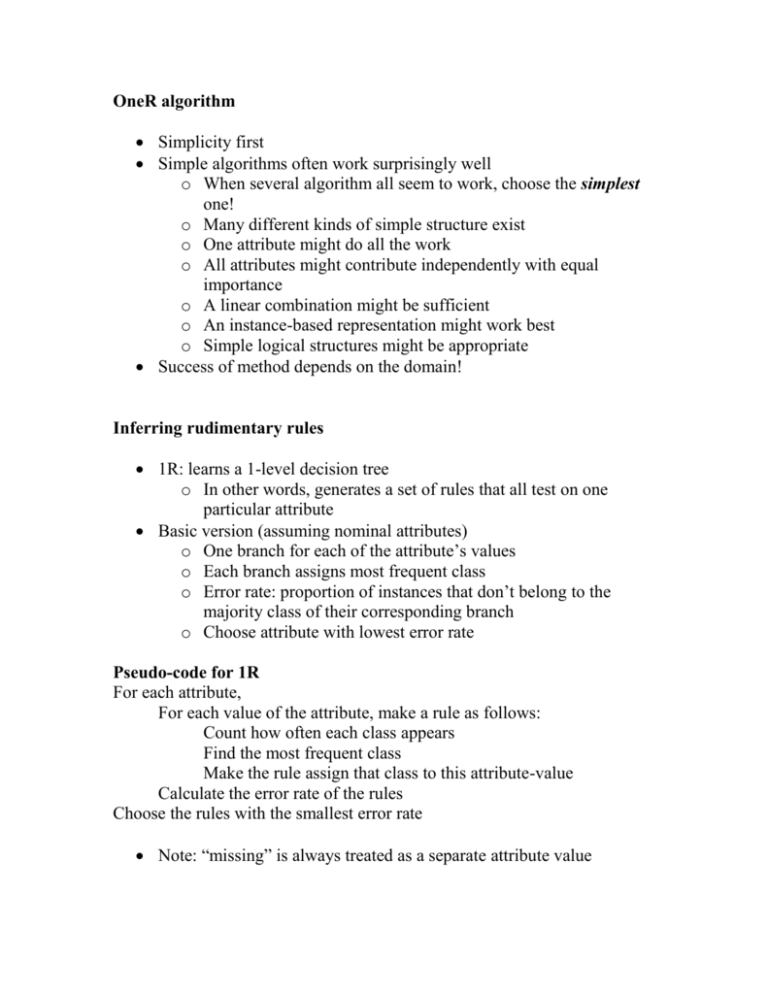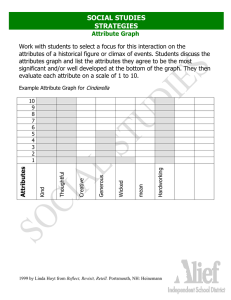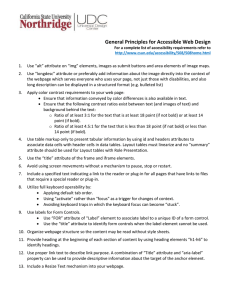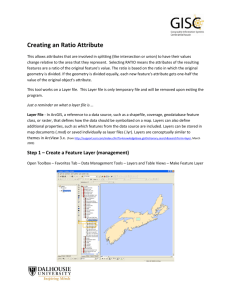OneR Algorithm: Simple Machine Learning Rules
advertisement

OneR algorithm Simplicity first Simple algorithms often work surprisingly well o When several algorithm all seem to work, choose the simplest one! o Many different kinds of simple structure exist o One attribute might do all the work o All attributes might contribute independently with equal importance o A linear combination might be sufficient o An instance-based representation might work best o Simple logical structures might be appropriate Success of method depends on the domain! Inferring rudimentary rules 1R: learns a 1-level decision tree o In other words, generates a set of rules that all test on one particular attribute Basic version (assuming nominal attributes) o One branch for each of the attribute’s values o Each branch assigns most frequent class o Error rate: proportion of instances that don’t belong to the majority class of their corresponding branch o Choose attribute with lowest error rate Pseudo-code for 1R For each attribute, For each value of the attribute, make a rule as follows: Count how often each class appears Find the most frequent class Make the rule assign that class to this attribute-value Calculate the error rate of the rules Choose the rules with the smallest error rate Note: “missing” is always treated as a separate attribute value Evaluating the weather attributes Dealing with numeric attributes Use classification based discretization method to change numbers into interval values. Discussion of 1R 1R was described in a paper by Holte (see “ simple_rules” in presentation/online papers folder) o Contains an experimental evaluation on 16 datasets (using cross-validation so that results were representative of performance on future data) o Minimum number of instances was set to 6 after some experimentation o 1R’s simple rules performed not much worse than much more complex decision trees Simplicity first pays off!











